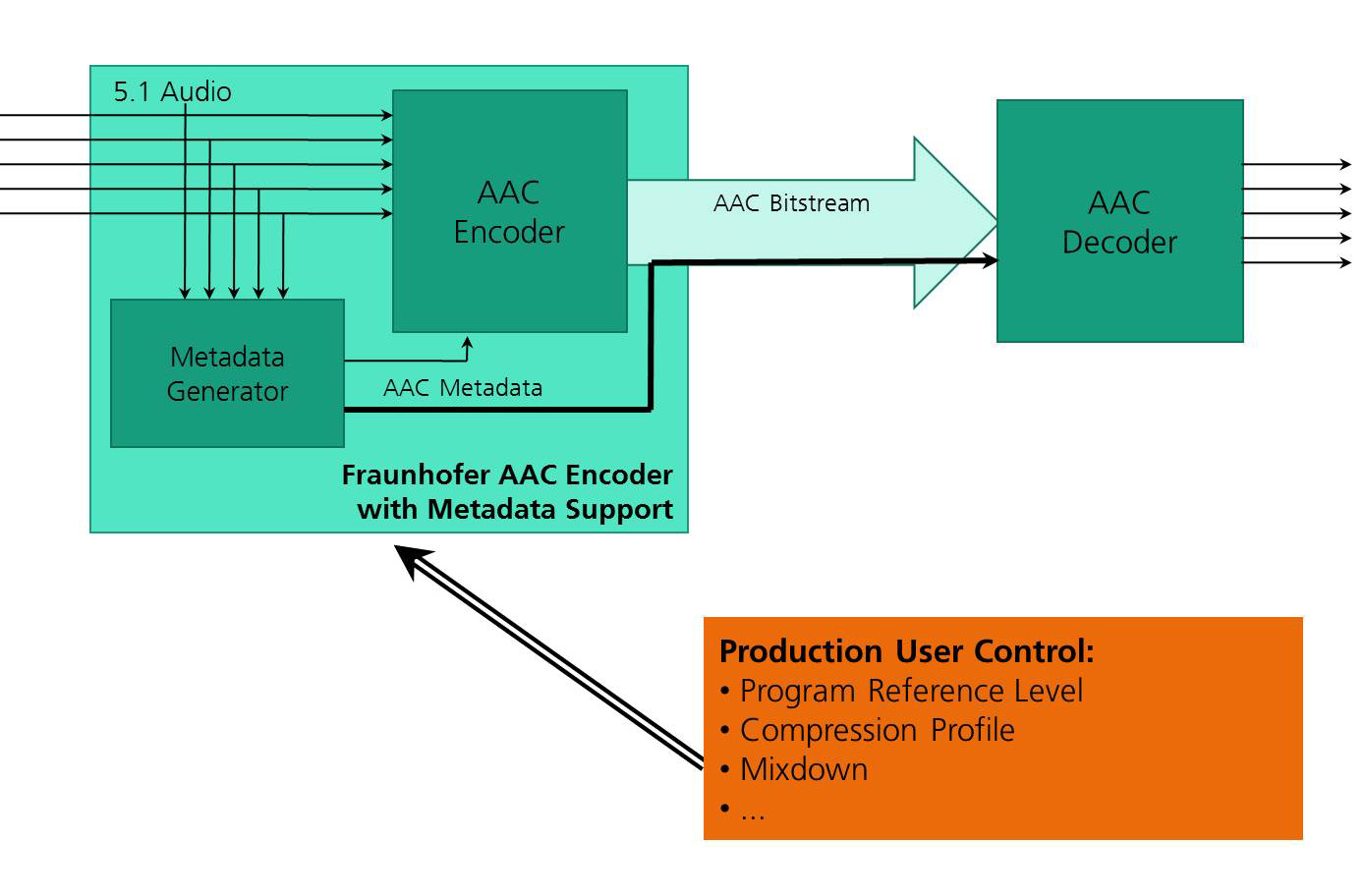Audio-specific metadata play a significant role in controlling program loudness, dynamic range and downmixing of the broadcast audio bit stream. With MPEG-4 AAC and HE-AAC now being a popular choice for digital broadcasting services worldwide, the importance of loudness-related metadata as a standardized feature of these codecs becomes even more relevant when the requirements of program loudness normalization are taken into account. One requirement is that the audio of TV commercials have the same loudness than the TV program they accompany. The MPEG AAC formats natively support all required metadata parameters (e.g. for loudness control) included in professional audio codec and broadcast systems. In addition, Fraunhofer IIS offers implementations for transcoding of existing and generation of new metadata.
Loudness Normalization
The Dialogue Normalization is used to adjust and achieve a constant long-term average level of the main program components across various program materials, e.g., a feature film interspersed by commercials.
Dynamic Range Control
The Dynamic Range Control (DRC) facilitates control of the final dynamic range of the audio and adjusts compression to suit individual listening requirements.
Downmixing
The Downmix maps the channels of a multichannel signal to the user`s mono or two-channel stereo speaker configuration.
